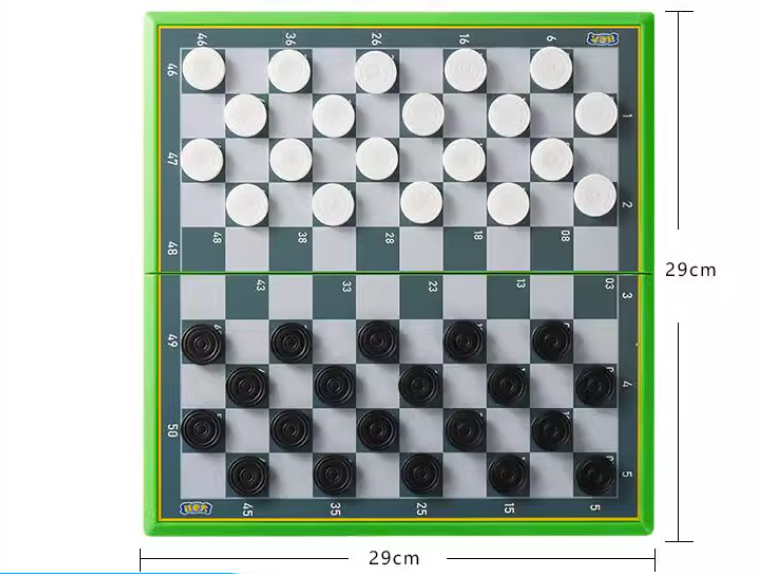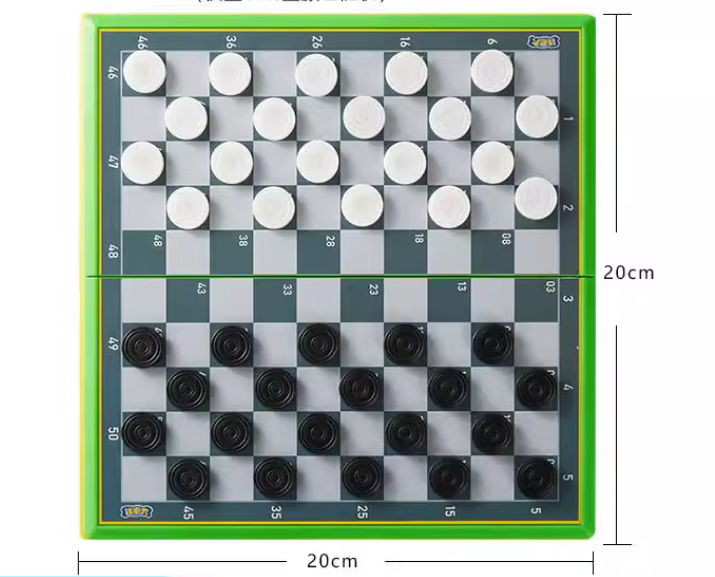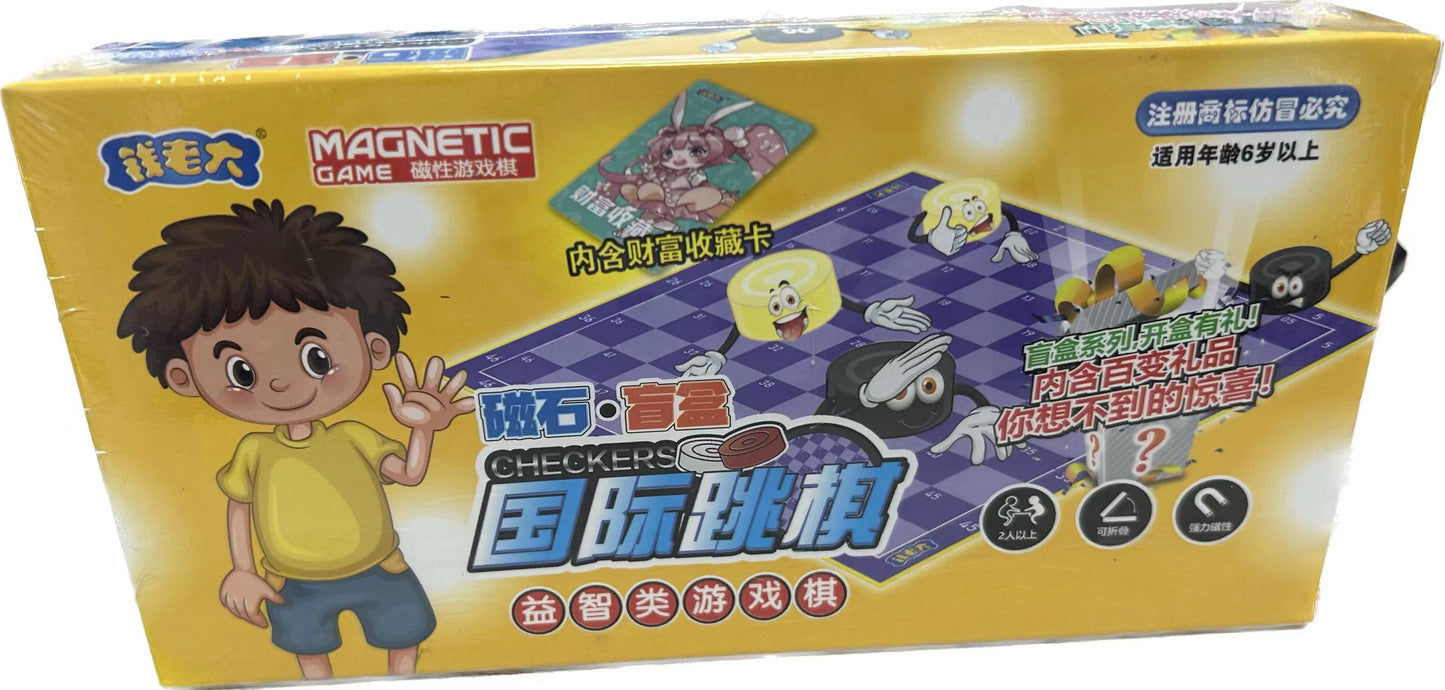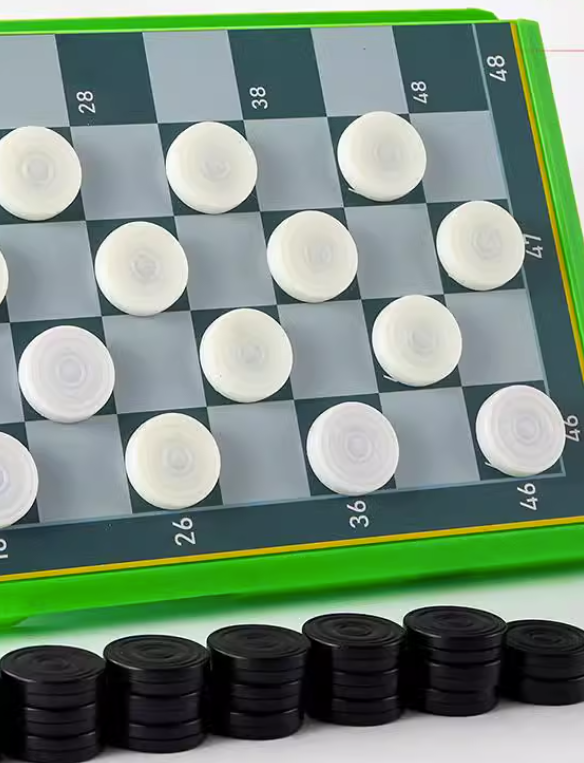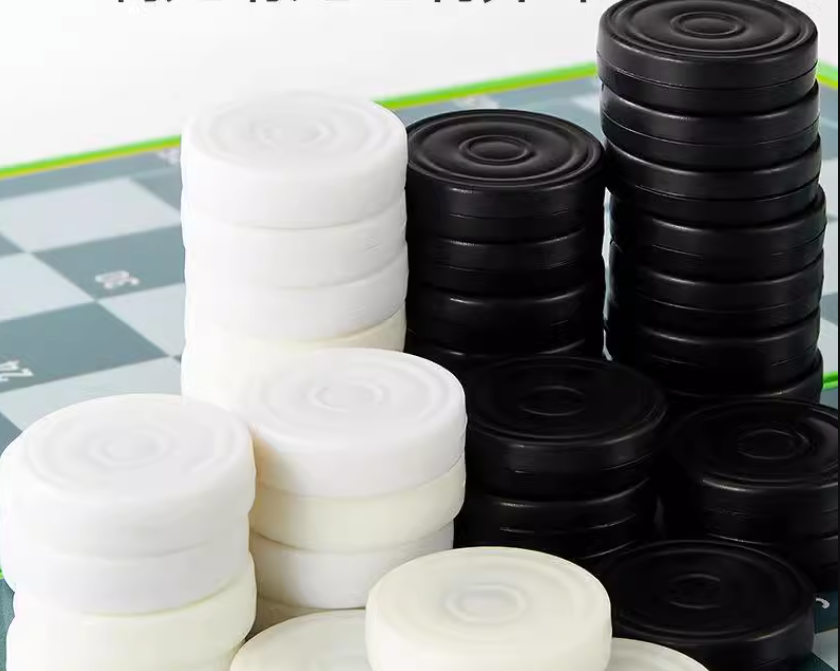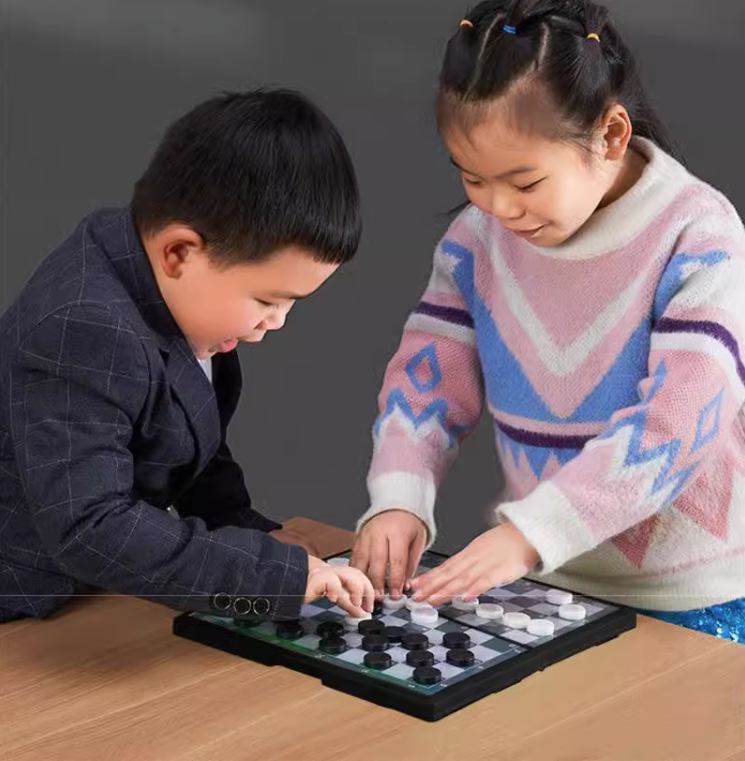PNL COMPANY LTD - Loklibuy
|Hong Kong International Drafts Association|Magnet Checkers Children/Adults 100 squares
|Hong Kong International Drafts Association|Magnet Checkers Children/Adults 100 squares
Low stock: 2 left
Couldn't load pickup availability
Standard model: 29x29cm when opened
Mini model: 20x20cm when opened
Magnetic chess pieces are not easy to fall off, and the environmentally friendly materials have no burrs and no odor.
Chessboard: It is a square composed of one hundred small squares arranged at intervals between dark and light colors, (i.e.: 10 small squares It is used as a chess game record. Chess pieces: The chess pieces are cylindrical, with twenty black and white chess pieces each. There are ribs on the surface of the chess pieces. This kind of chess piece is called a "pawn". Turn the pawn over (or stack two pawns) and it will become the "king" (when the pawn jumps to the opponent's When the bottom line is reached, it is upgraded to "king" or called king chess.) Before playing chess, place the chessboard between the players. The lower left corner of the chessboard facing both sides is a black square. The black pawns are placed on the chess positions 1 to 20, and the white pawns are Placed on the chess positions 31 to 50, the player with white chess at the beginning of the game goes first. Movement: All chess pieces move in the black grid.
1. The soldier's movement method: he can only move diagonally forward one square, and cannot move backward.
2. Pawn jumping: The two black and white chess pieces are closely connected on a diagonal line. If it is one side's turn to play chess and there is an empty chess position in front and behind the opponent's chess piece that can jump over the opponent's chess piece, then the opponent's chess piece can be jumped over. The chess piece captures the skipped chess piece and takes F from the chessboard.
3. Continuous jumping of soldiers: After jumping over the opponent's chess pieces, and encountering chess pieces that can be jumped over, you can jump over continuously, eat the jumped chess pieces, and remove them from the chessboard at once. The pawn cannot retreat when moving, but when encountering a jump or continuous jump, it can retreat or capture.
4. The promotion and transformation of pawns: Before the game starts, the chess pieces placed by both sides on the chessboard are all pawns. During the game, if the pawns stop when they reach or jump to the opponent's bottom line, they can be upgraded to the "king" that has just been upgraded. The king does not have the right to the king's move until the next move. During the game, if a pawn reaches or jumps to the opponent's bottom line without stopping (that is, passing by in the middle), it cannot be promoted to "King".
5. The king's move: The king can advance or retreat on any diagonal line, and there is no limit to the number of squares. (Similar to the movement of the bishop in chess
6. The king's jump capture: When the king and the opponent's chess piece meet on the same diagonal line, no matter how many chess positions there are, as long as there are empty chess positions before and after the opponent's chess piece, the king's chess piece can jump over and capture the opponent's chess piece, and In the empty space in front and behind the opponent's chess piece that you want to jump over when jumping.
7-King's Continuous Jump: It's basically the same situation as the Soldier's Continuous Jump, except that the distance is not limited.
Rules for eating:
1. If there is a jump, you must eat: Whenever there is an opportunity to jump or jump, you must jump or skip continuously regardless of whether it is beneficial to you. Especially if there is a situation of continuous jump, you must jump all the opponent's chess pieces. Don't stop until there's no more jumping left
2. Capture the majority of chess pieces (must capture more but not less): If there are two routes or two chess pieces that can capture the opponent's chess pieces, then no matter whether it is beneficial to you or not, you must capture more chess pieces. For example: You can capture the opponent's chess pieces on two routes at the same time. You can capture 3 chess pieces on one route and 2 chess pieces on the other route. You must jump to the route that captures 3 chess pieces first.
3. Turkey Strike: During a continuous jump, the king or pawn must jump all the opponent's possible chess pieces before they can remove the opponent's skipped chess pieces from the chessboard at once. It is not allowed to jump one (chess piece) to get one (chess piece) in a row of chess moves, nor is it allowed to jump over the opponent's same chess piece twice. The method of taking advantage of this rule is called Turkey Strike.
The chess game ends:
1. All chess pieces are captured by the opponent, which is a negative chess piece.
2. The remaining chess pieces on the chessboard are blocked by the opponent, and there are no pieces left to move, which is a negative chess piece.
3. When the chess game reaches the end and there is no possibility of defeating the opponent, it is a draw.
Share
